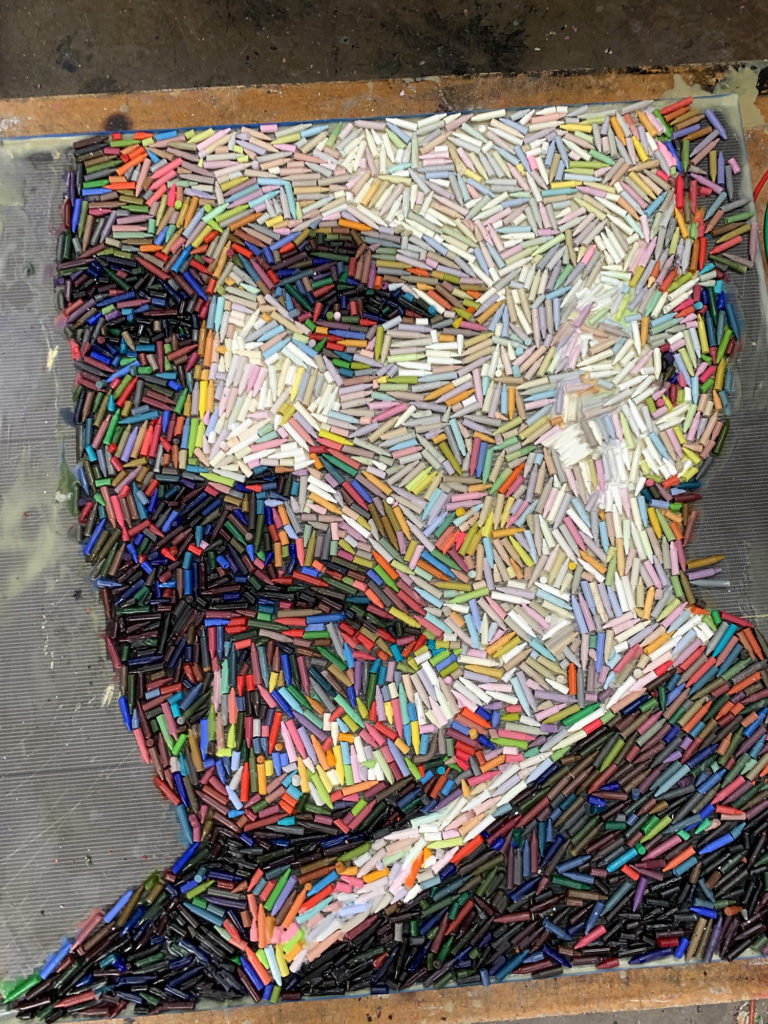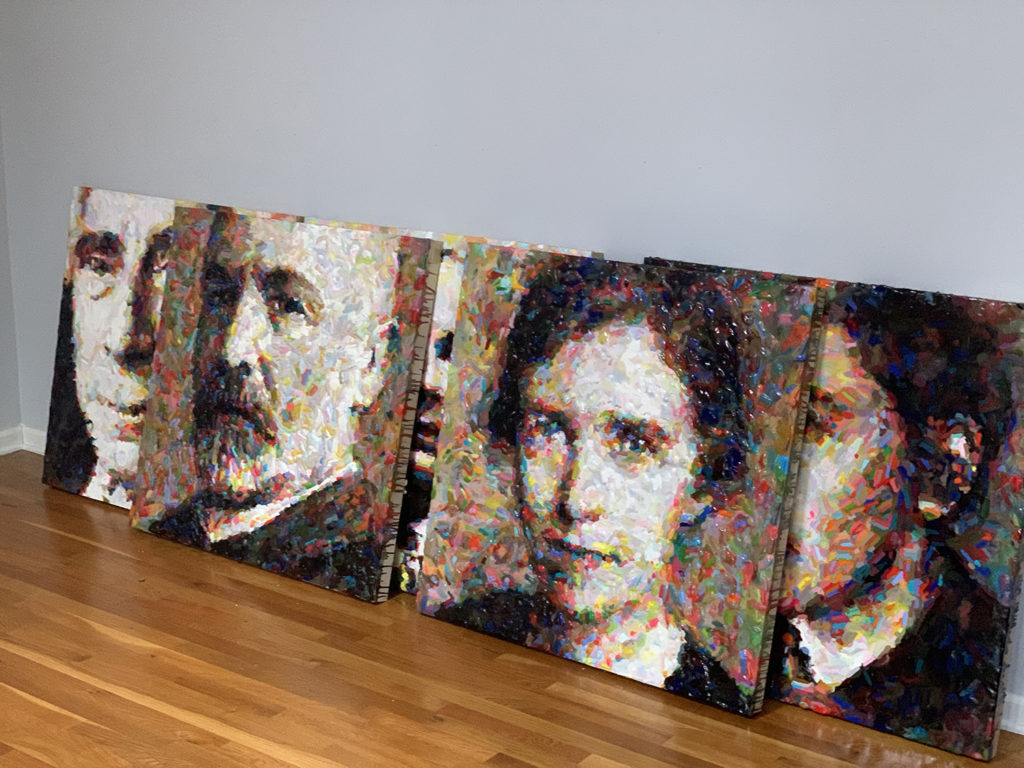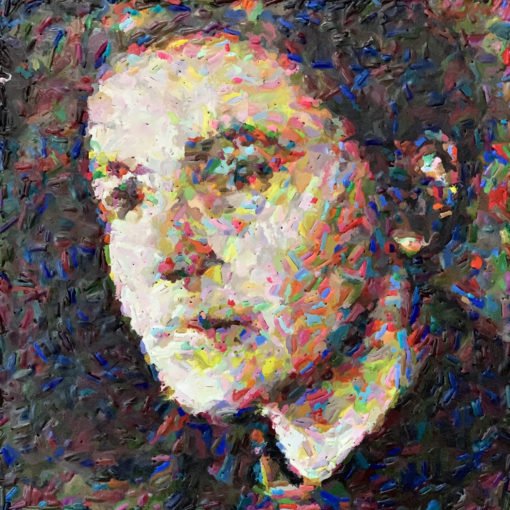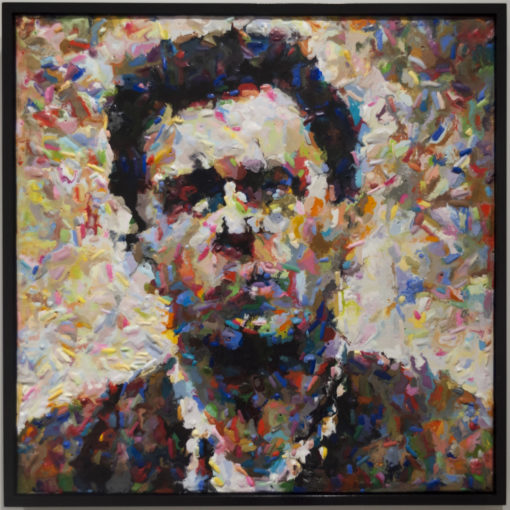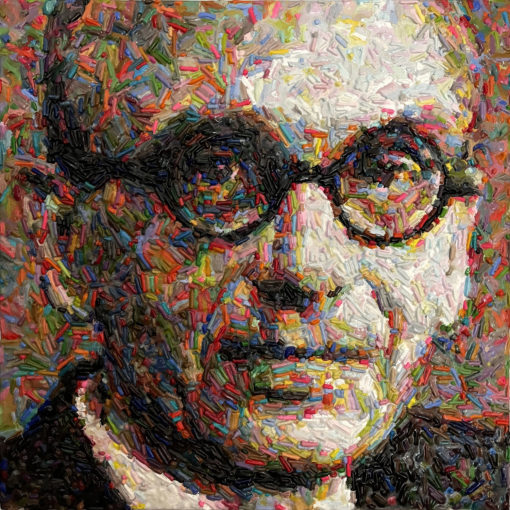Georg Cantor (Mathematician Series) –36×36”
Melted hand cast encaustic crayons
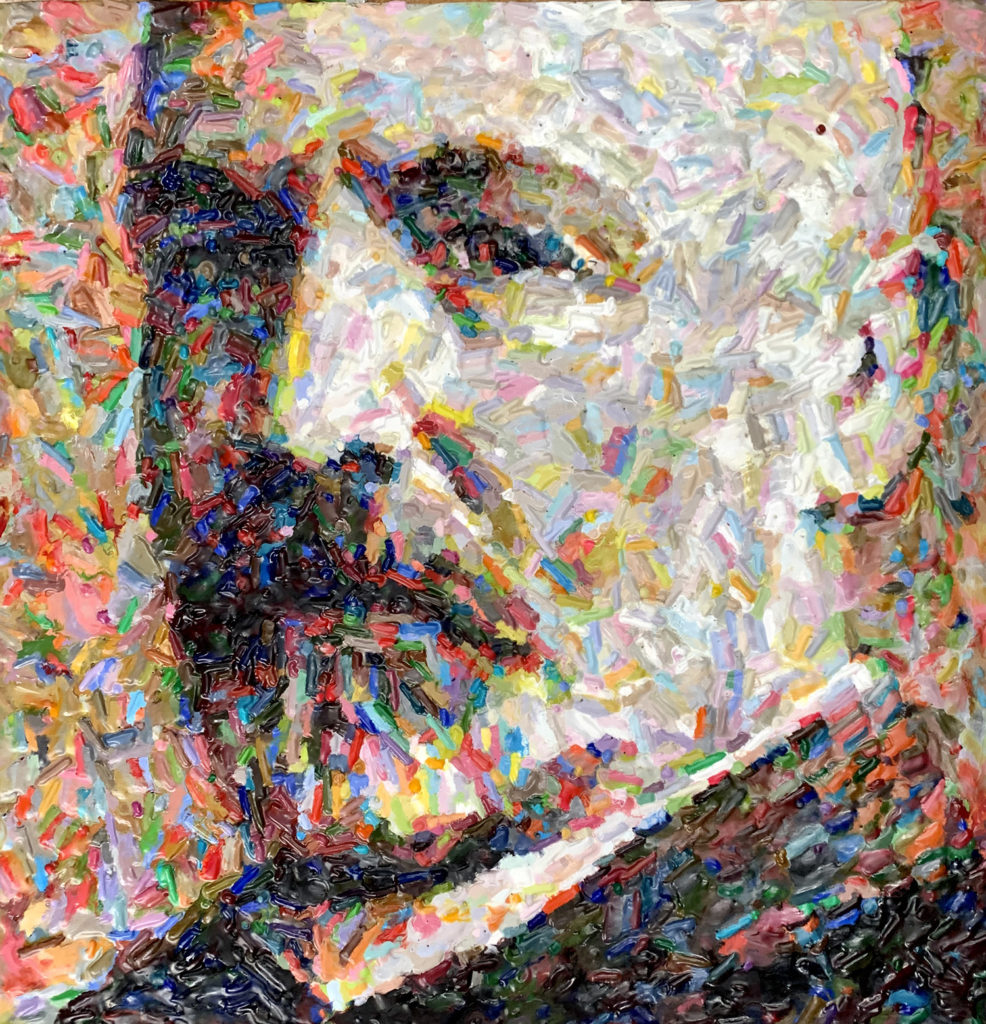
Georg Cantor (1845-1918) was born in St. Petersburg, Russia. When he was eleven, his family moved to Germany where he excelled at both mathematics and the violin. After earning a PhD at the University of Berlin, he took a position at the University of Halle, where he would remain the rest of his life. His dream was to work for his alma mater, but unfortunately, his former mathematics mentor there, Leopold Kronecker, regarded his work poorly and refused to help him return to the University of Berlin as a professor.
During his life, Cantor was a constant source of controversy. Like Ludwig Wittgenstein, who regarded his work as a joke and nonsense, Kronecker ridiculed Cantor as a scientific charlatan and, believing that only God is infinite, was offended as a Christian by Cantor’s ideas. Kronecker famously said, “God made the integers, and all the rest is the work of man.” Cantor was a devout Lutheran who believed his ideas about infinity came from his relationship with God. Only at the end of his life, after spending many years in depression and frequenting mental institutions, was he vindicated in his work by Bertrand Russell and David Hilbert. As a result of his own stressful career, Cantor became a champion of young mathematicians and tried to help them in the face of pushback by older mathematicians who felt threatened by their ideas.
So what made Cantor such a lightning rod? He is the father of set theory, which led to his investigations into the nature of infinity. We first learn about some of his ideas of set theory in elementary school math classes. His ideas about infinity came to him as he was comparing and contrasting sets.
For example, the set of natural numbers can be written as {0, 1, 2, 3, 4, 5…}.
We’ve all also learned about the set of integers: {…-5, -4, -3, -2, -1, 0, 1, 2, 3, 4, 5…)
and a set of rational numbers might look like this: {1/2, 2/2, 3/2, 4/2, 5/2, 6/2…}.
The set of natural numbers and the set of integers are subsets of the set of rational numbers, so they can all be imagined as reaching the same infinity.

However, the numbers that can’t be represented by a whole number or a fraction make up the vast majority of all numbers. This is where real numbers come onto the scene. Cantor believed that the set of real numbers constitutes an unlistable infinity of numbers. More specifically, there is an infinity of infinities.
Think of a number line and all the possible points between 0 and 1.
————2————–1————-0*————-1*————-2——–
Between any two rational numbers, there is always another number that exists that can be taken out to even more decimal places. So to list the members of a set of real numbers that reaches to infinity is an unfathomably fearful task. One can see how computer science might be linked with Cantor’s legacy!
Cantor was ridiculed for asserting that there are different kinds of infinity. Emerson’s phrase “To be great is to be misunderstood” fits him perfectly. In appreciation of his contemporary, David Hilbert extolled the maligned mathematician with the words, “No one should expel us from the Paradise that Cantor has created.”

